The Czech Republic, Hungary, Moldova, Lithuania ... All these countries were part of the Jagiellonian Empire, but this was not enough for our rulers. They even had a chance to choose the emperor himself. And it would not be the first or the last ruler to owe the crown to the Jagiellonians.
Year 1433, Niepołomice. The deputies of Stefan II, the hospodar of Moldova, stand in front of Władysław Jagiełło. Currently, Moldova is a small country, but in the Middle Ages it was a large country, occupying part of today's western Ukraine and northern Romania.
From 1387, it was formally part of the Kingdom of Poland. Moldavian hospodars paid homage to Jagiello. If any of them did not feel like it, the Poles found a way. As a last resort - they exchanged for a more reliable one.
There were problems with Stefan II, because he won the throne with Turkish help. Jagiełło was prepared for this and already had a candidate for the new ruler of Moldova in his sleeve . It was Elijah, Stephen's half-brother and his mortal enemy. He ruled his home country before, but defeated in a fratricidal fight, he escaped to Poland.
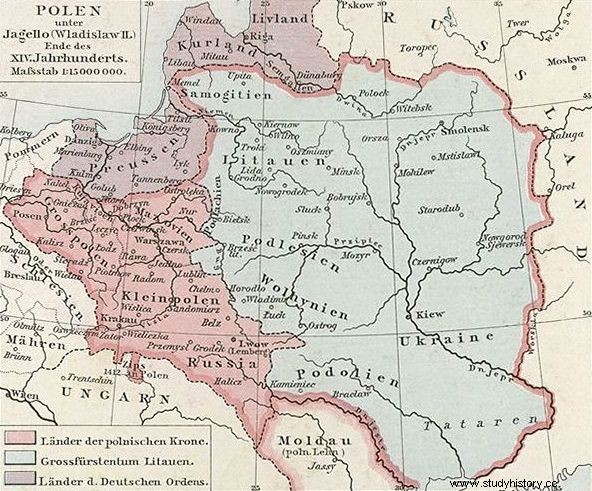
The Kingdom of Poland and the Grand Duchy of Lithuania under the rule of Władysław Jagiełło. In 1387, Peter I was the first Moldavian hospodar to pay tribute to Jagiello and Jadwiga (source:public domain).
The new hospodar knew what was going on. That is why he sent a messenger to Jagiełło, asking him not to give Elijah the army. . - Our lord is ready to pay homage to the king due to the obedience of his predecessors and be faithful to help him - stated the representatives of the Moldovan ruler.
Jagiełło accepted the offer. Elijah wanted then to secretly sneak to Moldova, but he was caught in front of the border and imprisoned in Sieradz. The potential candidate for the throne was too valuable to let him escape.
Doubtful candidate
In the following years, Poles often had to reach for their own candidates for the Moldavian throne. Their dynastic laws were not always well founded, but the pretender with the right protector ceased to be a cheat.
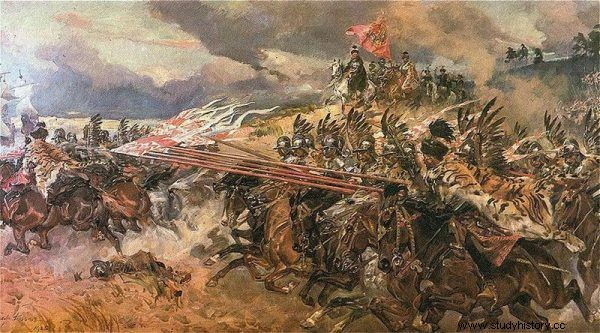
Where there was no legal basis for the throne, there was always the argument of force. In the painting, the charging hussars by Wojciech Kossak (source:public domain).
In 1552, the boyar Petru Lăpușneanu (better known as Piotr Łopuszanin) who stayed in Poland stated that his real name was Alexander and that he came from a Moldavian ruling family.
Sounds incredible? No problem. The field hetman of the Crown Mikołaj Sieniawski knew that over three thousand rides and one hundred and fifty hikers would make this story credible . Before they crossed the border, Łopuszanin, who named himself Prince Alexander IV, paid homage to the Polish Crown.
It remains to get the country for the Polish challenger. Because when Sieniawski was preparing the expedition, the Moldovans chose their ruler - Jan Joldea. Therefore, first Captain Paweł Secygniowski was sent with the unit to investigate the situation. When the deputies sent by the captain did not return for a long time, it was realized that they had been stopped by Joldea.
Secygniowski quickly attacked the seat of the hospodar. He set fire to the farm buildings, captured the palace, put handcuffs on all the captured ones and set off towards Poland. On the way, he met Alexander IV, who was advancing with his main forces. He handed over the captured Moldavian dignitaries to court.
The Lopuszan man had Jan Joldea mutilated (according to one version he had his ears cut off) and locked him in a monastery, and he let the rest go. The new ruler of Moldova easily entered the then capital of Hospodarstwa - Suceava (today in Romania). The Kingdom of Poland regained its fief .
Operation Prague
In 1471, after the death of the Czech king George of Podebrad, our southern neighbors were unable to choose his successor. Dobiesław of Kurozwęki, envoy of the Polish king Kazimierz Jagiellończyk, appeared at the second election session. He sought the throne for the ruler's eldest son - fifteen-year-old Władysław.
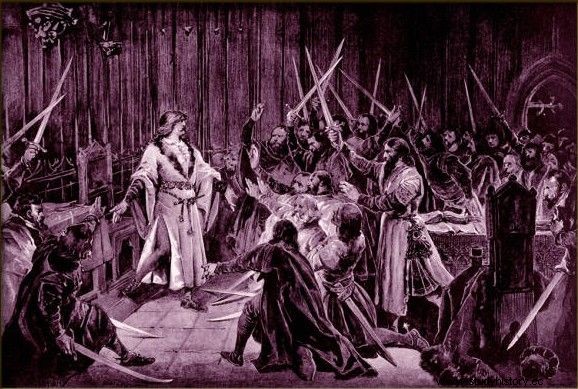
Czech magnates had no problem with choosing Jerzy of Poděbrad as their king. After his death, they lacked determination (author:Adolf Liebscher, source:public domain)
Dobiesław, a great speaker, praised his candidate, appealed to Slavic solidarity, spread a vision of the beneficial cooperation of both countries. The Czech gentlemen were persuaded and chose the Polish prince as their ruler .
Declarations by declarations, but the king of Poland, to be sure, provided the firstborn with an escort - a 10,000-strong army. On August 19, 1471, the prince arrived in Prague, and two days later he was crowned in the cathedral of St. Hello.
In 1490 there was an opportunity to take over the second southern neighbor - Hungary . Two sons of Kazimierz Jagiellończyk had a chrapka for the crown:Władysław, already ruling in the Czech Republic, and Jan Olbracht.
Hungarian magnates liked the soft as wax Władysław, called "the king of well", than the energetic Jan Olbracht, supported in turn by the Magyar nobility. There was a civil war in which Władysław's supporters emerged victorious.
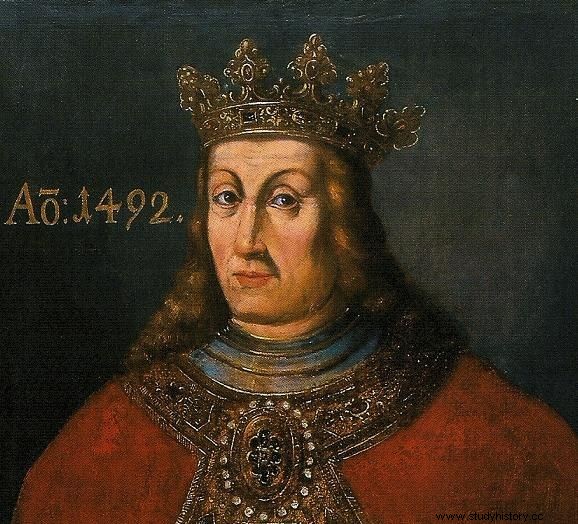
If Jan Olbracht had been more reliable, he would have probably become the king of Hungary. Hungarian magnates preferred the gentler Władysław Jagiellończyk, which led to the civil war (source:public domain).
The conflict itself says a lot about the importance of Poland at that time. The cast of the Hungarian throne became an internal affair of the Jagiellonian dynasty.
How about becoming an emperor?
Finally, 1519 has come, a year of incredible opportunity. The Jagiellonians could eliminate the Habsburgs from the game, and take over the German Reich themselves in good winds.
Emperor Maximilian Habsburg has just died. The imperial throne was elective, and among the seven electors was the Czech king traditionally. At that time, Ludwik Jagiellończyk (Władysław's son) ruling there was thirteen years old, so the closest male relative - Uncle Zygmunt Stary, king of Poland, decided for him.
The most serious candidate for the imperial crown was Charles Habsburg, the young king of Spain, grandson of the late Maximilian. However, he was not the only potential emperor.
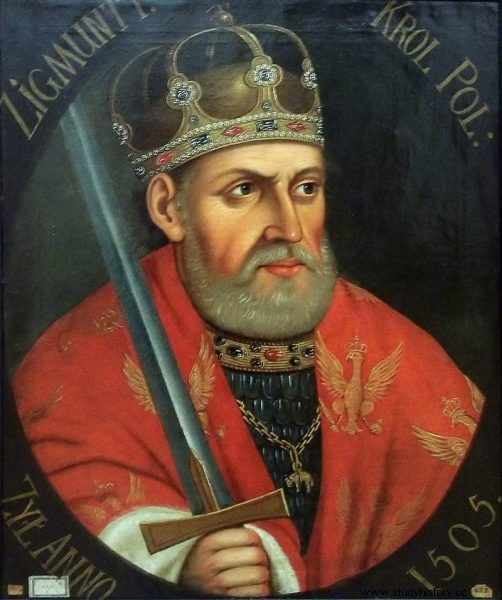
Sigismund the Old Emperor of Germany? There was a time when it was possible - and even very likely (source:public domain).
The French king, Francis I, was also eager to take over the reign of the Reich. As both of them had many enemies, a neutral candidate was sought, acceptable to both sides. Pope Leo X and the Venetian Republic pointed to ... Sigismund the Old.
The king of Poland, the ruler of the Reich? Nice prospect . She even had a good rationale. If family trees were to be developed, Sigismund had more imperial ancestors than Charles and Francis put together . In fact, he even got the name after his great-grandfather Sigismund of Luxembourg, emperor. However, the ancestors were not auctioned off, but for gold.
The kings of Spain and France raised the stakes. They did not regret a penny for bribes, also for Polish dignitaries. With seven electoral votes, Sigismund the Old, replacing his nephew, could decide who would be the ruler of the Holy Roman Empire. A great opportunity to eliminate the Habsburgs from the big political game in the middle of Europe.
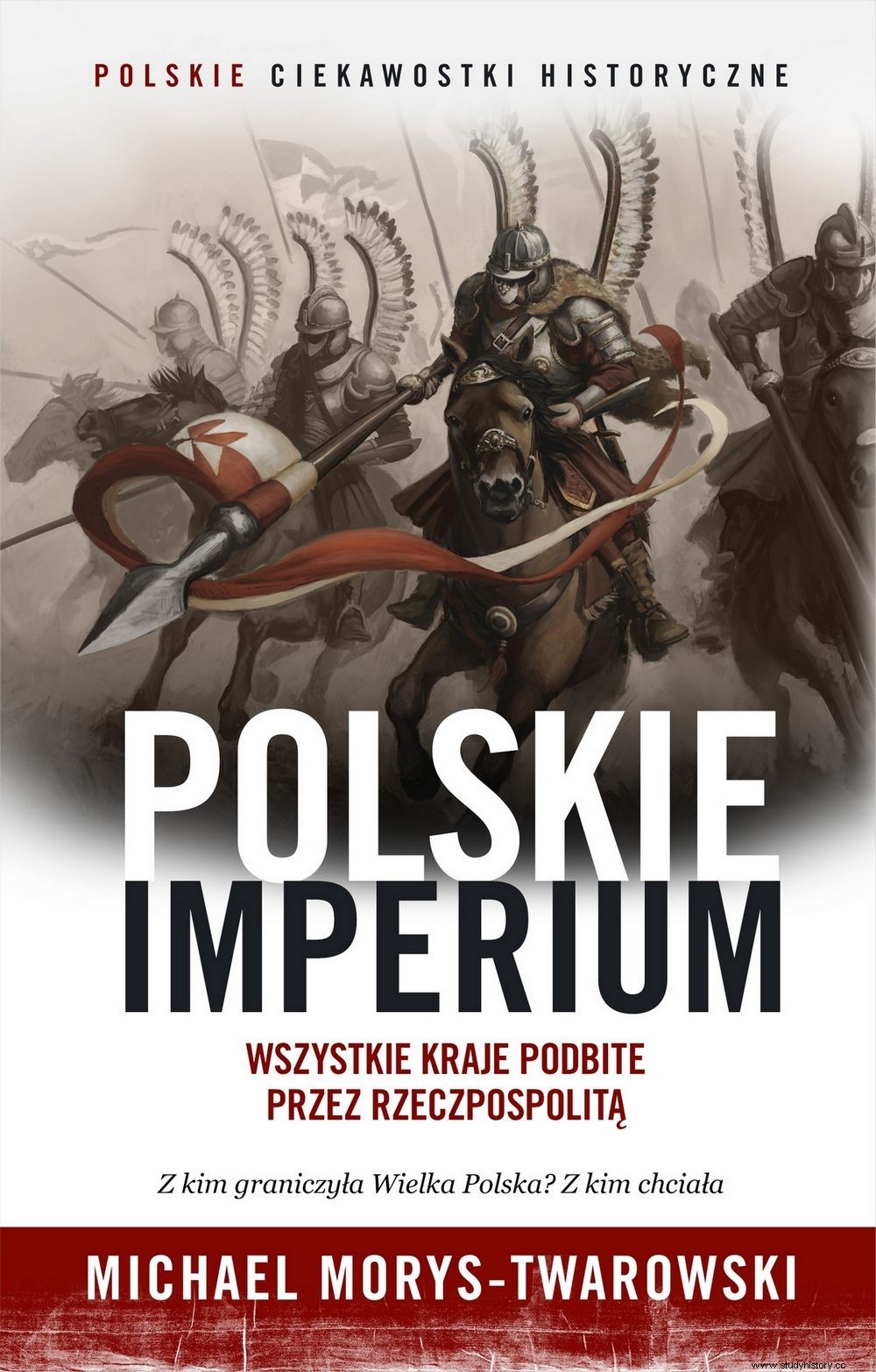
The Jagiellonians ruled Poland, Lithuania, the Czech Republic and Hungary at that time . They could always come back to the subject of Austria, to which they once claimed their rights. The expulsion of the Habsburgs from the Reich by the election of any other candidate would mean the total domination of the Jagiellonians.
Unfortunately, King Sigismund the Old, an otherwise crystal-honest man, was a mediocre politician. As Paweł Jasienica put it well: He would be an excellent administrator of the province or a treasurer. As king, he embodied the ideal of the wrong man in the wrong place .
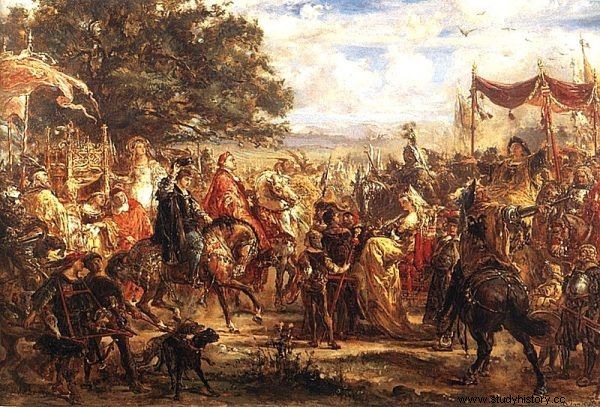
In 1515, at the congress near Vienna, Emperor Maximilian I Habsburg, King of Poland Sigismund I the Old and King of Bohemia and Hungary Władysław II Jagiellonian met. At the beginning of the 16th century, the Jagiellonians were a power. Jan Matejko's painting "The Congress of Vienna" (source:public domain).
First, he eliminated himself from the game for the imperial crown (the prince of Saxony became the compromise candidate), and then he supported Charles Habsburg and determined his victory. The new emperor showed no gratitude to the king of Poland for his help in winning the throne, and it did not teach Zygmunt anything anyway.
Seven years later, in 1526, after the death of his nephew Ludwik Jagiellończyk, king of Bohemia and Hungary, he could, as his closest relative, fight for the thrones in Prague and Buda. However, he forfeited them to the Habsburgs. In this respect, the ruler, associated with the Polish Golden Age, turned out to be a mediocrity that destroyed the achievements of the entire dynasty.
***
Michael Morys-Twarowski proves that we should not focus on the vision of our history full of failures and failures. Texts about a disastrous geopolitical situation and dangerous neighbors should finally be put aside. In the pages of the Polish Empire, the author boldly and eloquently describes the times when the Republic of Poland really was a superpower. It's high time to admit it.
Selected bibliography
- Czamańska Ilona, Moldavia and Wallachia towards Poland, Hungary and Turkey in the 14th and 15th centuries , Poznań 1996.
- Duczmal Małgorzata, Jagiellons. Biographical Lexicon , Krakow 1996.
- Lubczyński Mariusz, Pielas Jacek, Szydłowiecki Krzysztof , [in:] Polish Biographical Dictionary , vol. 49, 2015.
- Milewski Dariusz, Moldova in the orbit of Polish influence (1552-1572) , [in:] Polish-Moldavian meetings , edited by Marcin Kosienkowski, Lublin 2013.
- Spieralski Zdzisław, Moldavian adventures , Warsaw 1967.
- Swoboda Wincenty, Poland on the election of Emperor Charles V in 1519 , Wrocław 1947.
